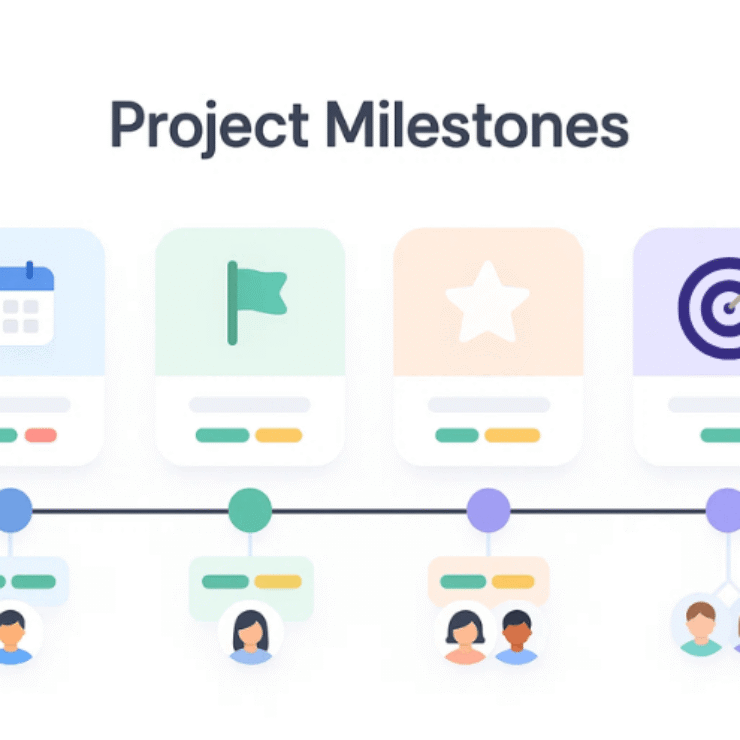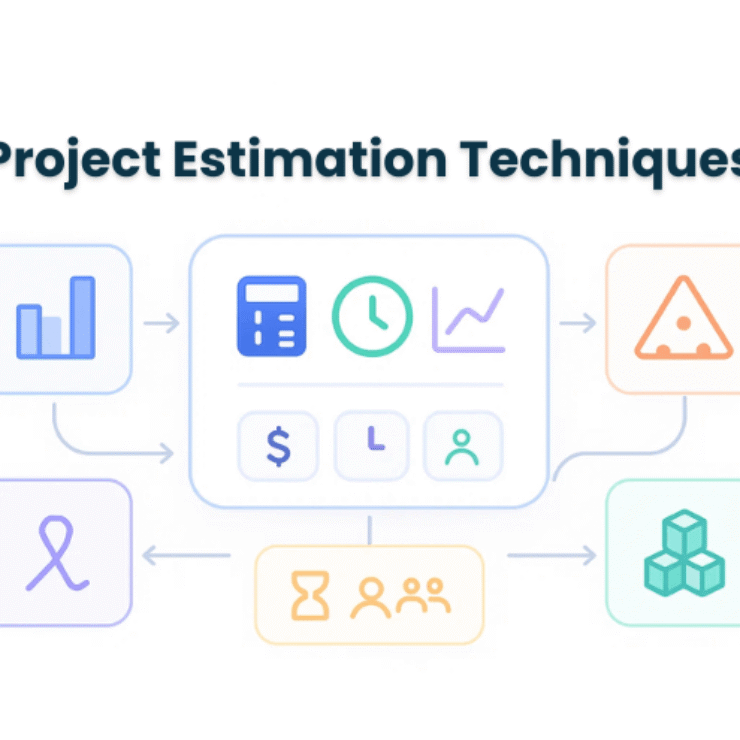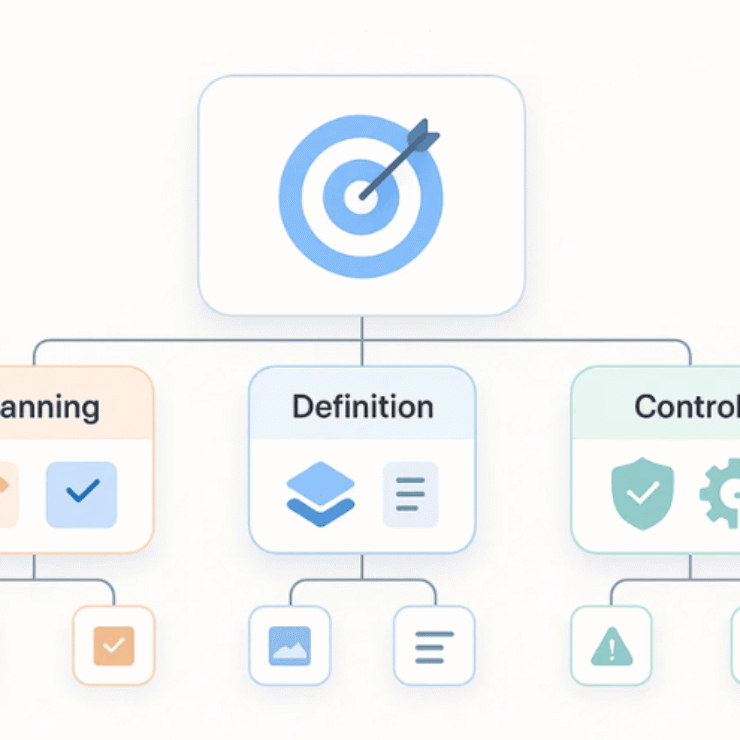Introduction
If you’ve ever delivered a project where “on track” kept changing every week, you already understand why a baseline matters. A project baseline is your compass — it’s how you tell whether your team is moving in the right direction, on time, and within budget.
After 15+ years of managing large programs across IT and business transformation, I’ve seen one pattern repeat: projects don’t fail overnight. They drift — slowly, quietly — when there’s no clear baseline to anchor performance.
According to PMI’s Reframing Project Success report, only 48% of projects are considered fully successful, while 12% fail entirely — often due to a lack of baseline discipline and measurable tracking.
So let’s talk about what a project baseline really is, how to create one that works in the real world, and how to keep it alive throughout your project’s lifecycle.
What Is a Project Baseline?
A project baseline is a frozen version of your project’s key plans — scope, schedule, and cost — established before execution begins. It’s the “agreed truth” against which you measure actual progress.
Think of it as your project’s GPS coordinates. Without a baseline, you can’t know whether you’re ahead, behind, or lost.
Baseline vs Plan vs Forecast
- Plan: The intended path to deliver the project.
- Baseline: The approved version of that plan at a specific point in time.
- Forecast: The updated projection based on what’s really happening.
Baselines bring accountability. They make performance measurable, conversations clearer, and success defensible.
Research from Project.co found that organizations using best project management practices — are 2.5× more likely to deliver on time and on budget.
Core Components of a Baseline
A strong baseline isn’t just a date on a Gantt chart — it’s a combination of measurable elements:
- Scope Baseline – What’s included (and excluded). Usually documented in your WBS and deliverable definitions.
- Schedule Baseline – The approved timeline: start dates, dependencies, milestones, and critical path.
- Cost Baseline – Your time-phased budget showing how funds are allocated across the project duration.
- Performance Baseline (Integrated) – Combines all three, used for tracking cost and schedule variance.
Some teams also add optional baselines like risk, benefits, or quality baselines — especially in large programs or PMOs with governance frameworks.
When & How to Set a Baseline
You set your baseline after planning and before execution — once your scope, cost, and schedule are locked and stakeholder approvals are in.
But here’s something I learned the hard way:
Expert Insight: “In one ERP rollout I led, locking the baseline before client approval caused weeks of rework. Since then, I’ve made it a rule: never baseline until every dependency owner signs off.”
A rushed baseline leads to chaos later. The best PMs don’t just baseline early — they baseline confidently.
A PMI study revealed that 37% of project failures stem from undefined objectives and unclear milestones — both of which baselines are designed to clarify.
Before you click “Set Baseline” in your tool, ask:
- Is every dependency mapped?
- Are all assumptions documented?
- Has leadership agreed to both what and when?
If not, wait. A solid baseline upfront saves ten times the effort later.
Tools & Techniques for Baselining
Most project management tools — whether you use Karya Keeper, MS Project, or Primavera — make it easy to set and compare baselines.
But remember: the tool doesn’t make it governance-ready — you do.
Before you start tracking performance, make sure your setup is clean and approved.
Here’s a quick checklist to follow:
- Prepare a clean, approved project plan.
- Export or snapshot it as the official baseline.
- Version-control every change (Baseline v1.0, v2.0…).
- Record who approved it, when, and why.
A visual baseline comparison — such as a Gantt overlay or dashboard variance — helps leadership spot deviations in seconds instead of wading through spreadsheets.
Top Tools for Setting & Managing Baselines
| Tool | Best For | Key Baseline Capabilities |
|---|---|---|
| Karya Keeper | Modern, cross-functional teams | Set task-level baselines, compare plan vs actual timelines, visualize project health, and detect early delays in a unified dashboard. |
| Microsoft Project | Enterprise & multi-phase projects | Capture multiple baselines, track schedule and cost variance (SV, CV), and run earned value analysis. |
| Asana | Agile or marketing teams | Compare timelines, review task history, and manage deliverable-level schedule drift with ease. |
| Smartsheet | Cross-departmental collaboration | Automate variance tracking, lock dates, and visualize baseline vs actual Gantt overlays. |
Pro Tip: Whatever tool you choose, create a formal naming convention for every baseline (Baseline v1.0, Post-Change Q2 2025, etc.).
It keeps your audit trail transparent and helps your team trust the data they’re using.
Using the Baseline During Execution
Your baseline isn’t meant to sit in a folder. It’s your performance dashboard.
1. Monitoring & Measuring
Regularly compare actuals vs baseline — not to assign blame, but to understand patterns.
On average, global project performance hovers around 73.8% — proof that while most teams achieve partial success, staying on track is still a challenge.
Track metrics like:
- Schedule Variance (SV) – Are you ahead or behind schedule?
- Cost Variance (CV) – Are you spending more or less than planned?
- SPI/CPI – Are your resources delivering value efficiently?
Baselines are the backbone of Earned Value Management — they make objective tracking possible.
2. Handling Changes & Rebaselining
Every seasoned project manager knows: change is inevitable, chaos is optional.
A baseline is not a prison — it’s a control point. When real-world conditions shift, you can either:
- Rebaseline: Create a new version when a major change alters the project trajectory, or
- Maintain original: Keep the first baseline intact and record variances separately for audit.
Expert Insight: “After 15+ years of managing complex programs, I’ve learned rebaselining isn’t failure — it’s maturity. The mistake is doing it reactively instead of through a governed cadence.”
Always document why you rebaseline. A good PM never hides the trail of decisions that shaped project history.
Pitfalls, Risks & Anti-Patterns
Even experienced teams stumble with baselines. Here are the red flags I’ve seen most often:
| Pitfall | What Happens | Fix |
|---|---|---|
| Baseline drift | The baseline keeps changing every few weeks. | Limit rebaselines to formal approvals only. |
| Over-rebaselining | “Moving goalposts” culture; performance becomes untrackable. | Use version control; maintain history. |
| Ignoring variance | Early signs of trouble get overlooked. | Review baseline reports weekly, not monthly. |
| Tool traps | Auto-update features overwrite baselines. | Lock baseline fields and use role-based permissions. |
Expert Insight: “I’ve seen teams change baselines so often that no one trusts the numbers anymore. The best ones treat baselines like contracts — flexible enough to evolve, but never casual.”
Sample Project Baseline (Template Walkthrough)
Let’s make it tangible. Imagine a product launch project:
| Component | Baseline | Actual | Variance |
|---|---|---|---|
| Design completion | Week 4 | Week 5 | +1 week |
| QA phase | ₹200,000 | ₹220,000 | +10% |
| Go-live milestone | 01 Oct | 06 Oct | +5 days |
Expert Insight: “In a digital transformation project with five cross-functional teams, we maintained one integrated baseline. That single source of truth cut our variance reporting effort by 40%.”
When variance creeps in, you have options: compress the schedule, reduce scope, or request additional resources — but you can only make that call confidently if your baseline data is clean.
Advanced Topics: Beyond the Basics
Integrating Risk & Uncertainty
For complex projects, create a risk baseline — a snapshot of your expected risk exposure at the start. Compare it quarterly to see whether new risks are emerging faster than mitigations.
Predictive Baselines with AI
Modern tools (including Karya Keeper) use machine learning to predict deviations before they happen.
If your forecast shows likely slippage, your baseline becomes a proactive signal — not a post-mortem chart.
Governance & Maturity
Mature PMOs define who can approve a rebaseline, how versions are logged, and what metrics are mandatory for closure.
High-maturity organizations (called Project Champions) achieve a 92% success rate, compared to only 33% for low-maturity teams.
Your governance framework is what turns baselining from a report into a decision-making discipline.
Key Takeaways
- A project baseline is your performance anchor — not paperwork.
- Set it once planning is complete and all dependencies are approved.
- Track against it regularly and document all rebaselines.
- Protect it with governance, but don’t be afraid to evolve it when needed.
- Above all, remember: you can’t steer what you don’t measure.
Final Thought
Project management isn’t about controlling people — it’s about controlling information. A well-maintained baseline gives you that control: clarity, predictability, and the power to make data-driven decisions when it matters most.
So before you kick off your next project, ask yourself — do you have a baseline you can trust? If not, that’s your real starting point.
FAQs
What is the difference between a baseline and a project plan?
A plan evolves; a baseline freezes that plan for tracking. It’s the approved “version of truth.”
Can a baseline be changed?
Yes — through formal change control. Rebaseline only for major shifts, not minor variances.
How often should you rebaseline?
Ideally once per major phase or after approved scope change, not more than once a quarter.
What happens if actuals exceed the baseline?
Investigate early. Address the cause — not just the symptom. Adjust future forecasts accordingly.
What baseline types matter most?
Start with scope, schedule, and cost. Add risk or quality baselines for high-stakes or regulated projects.



